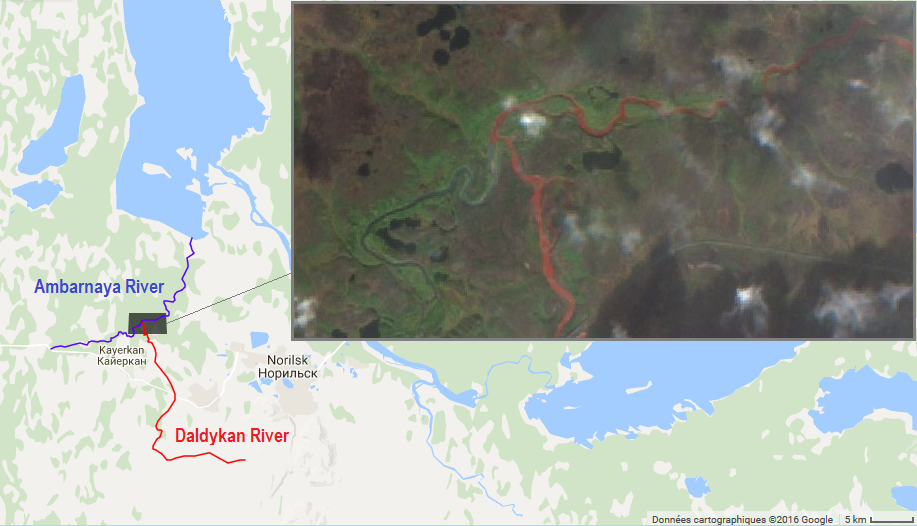The Daldykan River is a tributary of the Ambarnaya River, which feeds the Lake Pyasino in Siberia (738 km²). According to Wikipedia in English Lake Pyasino « is almost completely devoid of fish ». However, Wikipedia in French states that « Il est très poissonneux » (full of fish).
The news media reported that the Daldykan river recently turned red. The Association of Indigenous Peoples of Taimyr wrote in a facebook publication that the cause was a leak from the huge Norilsk Nickel mining-metallurgic complex. The New York Times also reported that the Norilsk Nickel company said, “as far as we know, the color of the river today is no different from usual.” The company published a press release stating that the river was in regular conditions, and illustrated this announcement with photographs taken on September 07, 2016 in which the Daldykan River is plain blue.
I have never been fishing in Pyasino Lake, so I can’t tell if it’s actually full or devoid of fish. However, I can tell that the Daldykan River looks bright red on the image that was acquired by Sentinel-2A satellite on Aug 28.

If you feel dubious, you can check it by yourself in the Sentinel-Playground. Edit (03-Nov-2016): Norilsk was finally condemned for violating pollution laws. « The amount of the fine was not disclosed but the maximum is 40,000 roubles – around $635 – for a parent company Nornickel that had a consolidated revenue of $8.5 billion in 2015 », the Siberian Times reports.

There is a big guy from Norilsk Nickel who just knocked at my door. He would like to know your address. Shall I give it to him ?
I’m away for the moment, please leave a message
Sarah Connor ? Non, c’est à côté..
Vous voulez un whisky ?